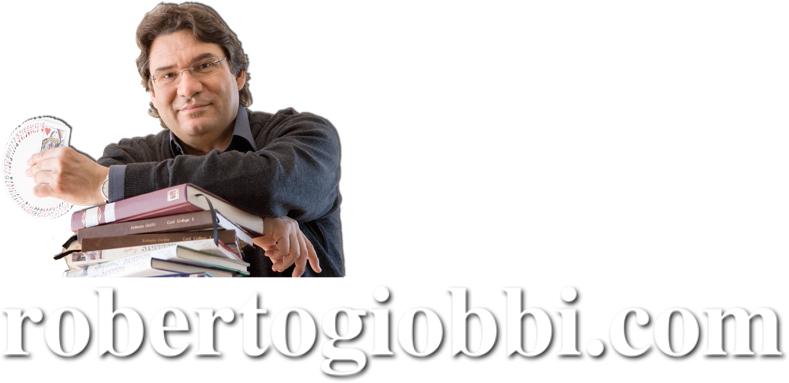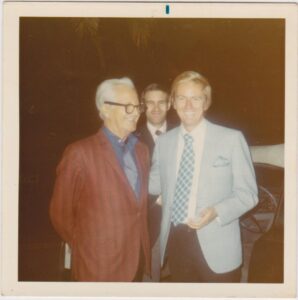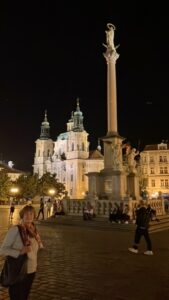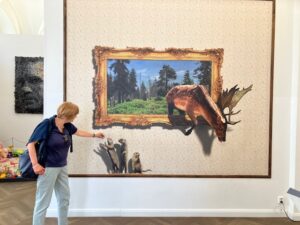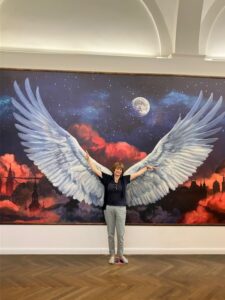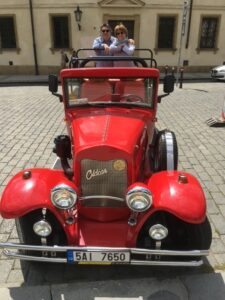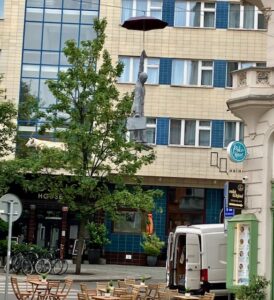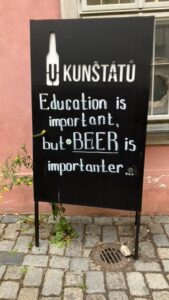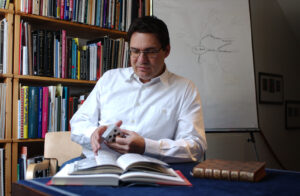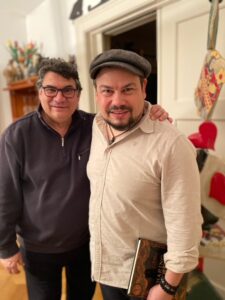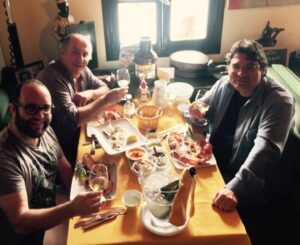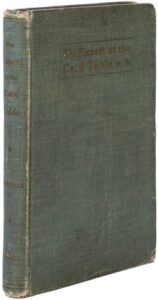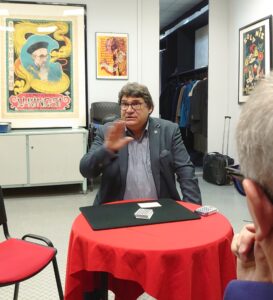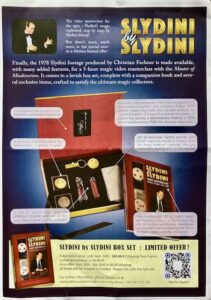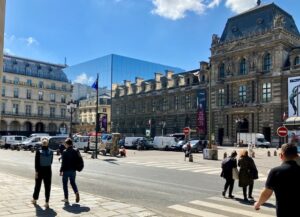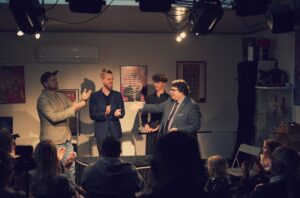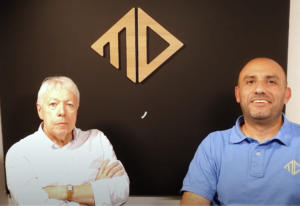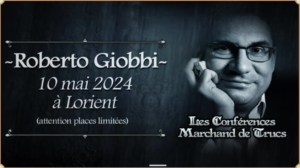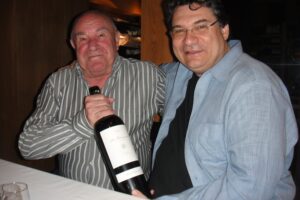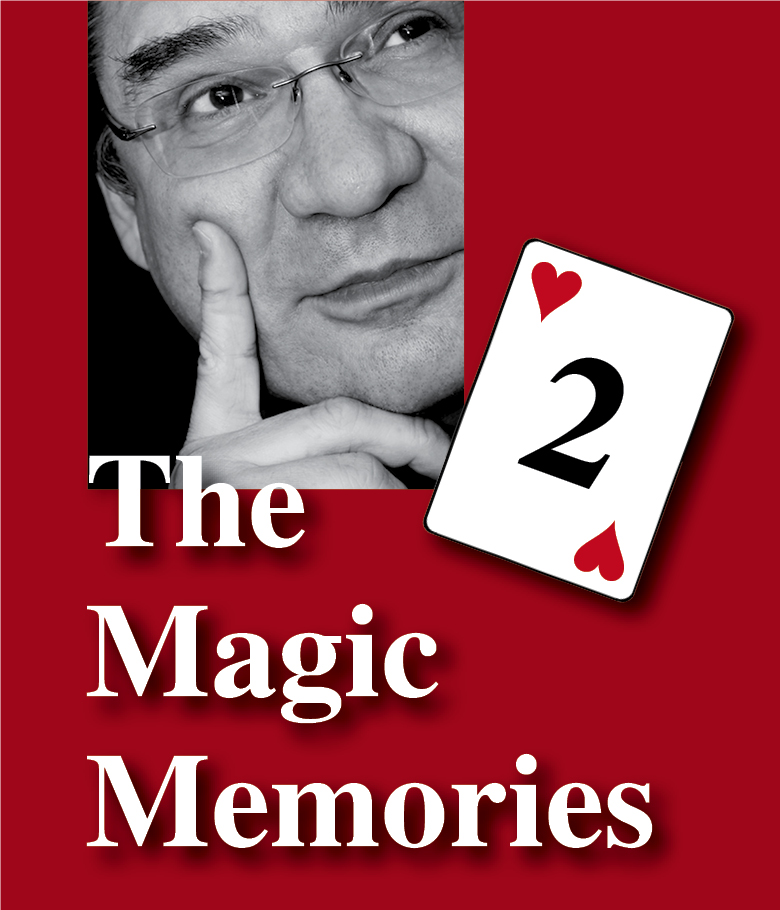
Hello everyone!
Today’s topics are: Update on Unexpected Agenda; The Magic & Gastronomy Lecture; Consecutive Ambitious Card
These are The Magic Memories 183, gone online Sunday, June 30th, 2024, at 0:07h sharp.
All The Magic Memories from 2021, 2022, and 2023, including the Magic Advent Calendar from 2020, can be found HERE.
As I am writing this on SAT, June 29th, 2024, it is what the Swiss call “Bündelitag”, i.e., the day you make your “bundle” and take off for vacations, it is the beginning of the summer school vacations that last six weeks.
Update on Unexpected Agenda
Several wrote in to ask about the status of my upcoming book project Unexpected Agenda.
I have been working the past year or so at assembling what I find to be the best of my notes from various sources (notebook, videos, audios, etc.), the majority of my own vintage, and some from close friends who have agreed to share their ideas with the rest of us (Lennart Green, Juan Tamariz, etc.), as well as some information scattered here and there, mostly from old books and magazines that are difficult to access.
I have finished rereading the 365 entries (!), each one page long, for the second time, which took me another two months, and next week we start the photos, graphics, drawings etc., followed by layouting, until the final PDF, which we hope to have ready by end July.
Then I will send it to the proof-readers, and hope to install their corrections, suggestions, additions, etc., before end SEP, so that we can send the PDF to the printer’s by OCT, so as to be able to ship in NOV/DEC to you.
That’s the plan…
As you can sense from the above, and from what I have written about “how to write a book” on other occasions, doing a book is a hell of a lot of work, sells a lot less than some silly trick that is over in five seconds and gets to be nominated “best trick of the year”… Plus with the increased costs in paper, labor, and logistics forces us authors and publishers to increase the price of a book; a publication that BC (before Corona) could be offered for $ 55 now needs to be priced at $ 75, and the profit is about the same as before, however, the costs of living have gone up meanwhile.
All this considered, this might be my last book… (I have said that after writing Card College Volumes 1 and 2 in German, in 1992… meanwhile I have written another sixteen books…)
The Magic & Gastronomy Lecture
Today I would like to tell you about one of the 67 lectures I have conceived in the past.
Maybe it will inspire you for a lecture of your own, provide you with a presentational idea for a trick, or just be for your academic pleasure (what kind of pleasure is that?).
In 2004 my dear friend Jesus Etcheverry (1943 – 2020) calle me up and invited me to a very special event in his native Basque country, to the III Jornadas Gastromágicas, which took place in Lekeitio, 27 & 28 March. They asked me to do a two-hour performance-lecture, which is the format I like.
The idea was to combine magic and gastronomy, and I admit that this immediately convinced me 🙂
They had done the event twice before, the first time with Juan Tamariz, the second time with Gaetan Bloom, so I felt in good company 🙂
While preparing, the first obvious thought – obvious to me, at least – was to structure the lecture like a gourmet menu with at least seven courses, maybe nine… what else?
A magic performance, whether formal or impromptu, is a complete experience. Although a detailed discussion of this issue would require a book in itself, the essence can be explained in a few sentences, with a succulent analogy:
A gourmet meal has several courses, maybe five to seven, even more if the portions are small.
Of these, only two or three are major courses, such as one important starter, a main dish and a featured dessert.
The remaining courses are conceived as appetizing transitions between the others and act as delicious “marriage brokers”. Such courses are the amuse-bouches, which tickle the palate at the beginning of the sensual journey: the soup, say, that allows the patron to move effortlessly from the fish and seafood to the plat de résistance, as the French colorfully call the main course. Then there is the sorbet, sometimes called un trou (a “hole”) by the French, a very small course, served after the main course or cheese board, which gives the mind and body a little rest, and seduces the customer to explore the dessert. And finally we come to the petits fours or friandises, fireworks of tiny sweets that accompany coffee and liquor, maybe even a cigar.
A magic performance—similar to a gourmet meal as an act of seduction and sharing—has a similar construction, although arguably with a greater artistic intention.
There is a captivating opener, a smashing middle effect and a memorable finale.
Between them are smaller pieces that consolidate the major effects, pieces that allow the performer and his audience to become acquainted and get personally closer. This makes the whole experience rich and pleasurable, a complete happening.
Neither in gastronomy nor in magic are these connective “minor works” treated as less important or done with less passion and talent than the “major works”.
They are just not as complex, prominent and loud, but they are equally conducive to the magic atmosphere and experience. They require the same discriminate attention from the performer as do his other works. As Fernando Pessoa (1888–1935), the famous Portuguese poet, said, “The full moon is reflected in the large ocean, but also in the smallest puddle.”
From the mind map below you can deduct everything I did, and in what order.
To download the mind map as a PDF for better reading, to make your additions, comments etc., CLICK HERE.
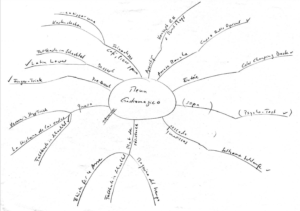
The mind map, obviously, was made just for myself, so it is written in a mix of Spanish, English, and German.
For those who are interested, here is the breakdown in English and in form of a list, with the literary references, just in case you want to look up one or the other.
Gastromagical Menu
Aperitif: I briefly explained the concept behind the Card College books and how I got the idea. I also showed the mind maps of the books (see Secret Agenda “December 18•Mind Map of Card College, Volumes 3 and 4”)
Amuse bouche: “Cups & Balls Opener” (see Confidences, “Overture for Cups and Balls”, p. 119, or a video performance HERE)
Entrée (meaning “Starter” NOT “Main course” as it has been mistakenly adopted and perpetuated in US-American menus): “Color Changing Deck” (see Card College Volume 5, p. 1333, or to watch a video performance of it HERE)
Soup: “A Psychological Test” (see Card College Volume 5, p. 1139)
Fish & Seafood: “The Endless Loop” (see Card College Volume 5, p. 1269)
Plat de Résistance, meaning “Main Course”, with three(!) of my favorite tricks from my professional repertoire: “Study for Four Aces”, “The Joker Folds Up”, “All’s Wells That Ends Wells” (all are in Card College Volume 5)
Cheese-board: “Stop!” and “The History of Playing Cards” (again, all from Card College Volume 5)
Pre-dessert: “Finger-trick” (see “May 11•Ultimate Magic of the Hands” in Secret Agenda, but you can see a video HERE)
Dessert: “SuperLative Lover” (Card College Volume 5, p. 1344)
Friandises (coffee, liquor, cigars): “Stickler”, my version of the Card Stab (see Stand-up Card Magic), and as finale “Prophecy” (see HERE)
That’s it. As you can see, a menu comme il faut… maybe not for ever day, but certainly for every second or third day!

Consecutive Ambitious Card
I just had an idea: Three decks on the table in their boxes.
From the first deck a card is selected, then lost in the deck, and the deck replaced in the box. Taking out the second deck, the card selected and lost in the first deck is seen to have risen to the top.
It is lost in the second deck, which is then replaced in its box.
Upon taking the third deck, the selection is seen to have risen to its top, too.
Solution? A forced card and two set-up decks.
At the end all three decks could be taken out and the top card turned over simultaneously by three spectators. The selection is seen on top of all three.
I have no idea how this would play in the real world, and if someone has not had this thought before.
Anyway, today is a hot day (32 degrees Centigrade), and Switzerland just won against Italy 2:0 in the European Soccer Championship, which leaves me ambivalent, as I am Italian and Swiss… but in any case it is time to stop and celebrate.
Obviously, in such cases it is an asset to have a double citizenship: If the Swiss win, my Swiss part celebrates, if the Italians win, my Italian part celebrates. I am thinking about a nine-course dinner…
See you next week-end 🙂
Wish you all a successful and happy week,
Roberto Giobbi
